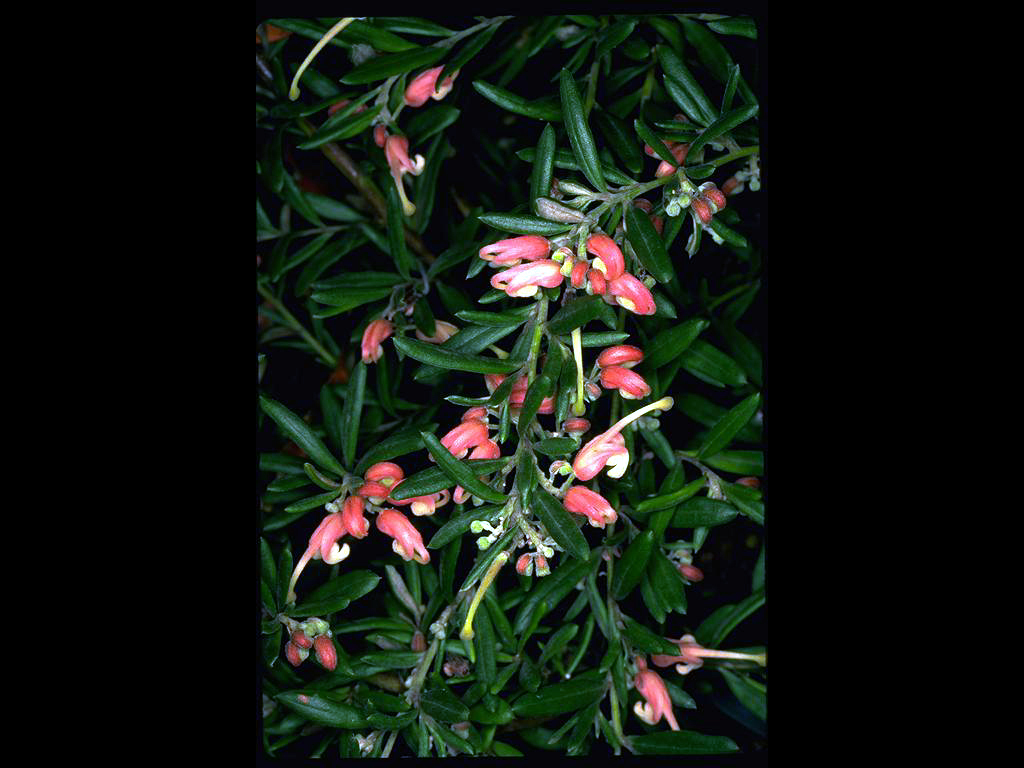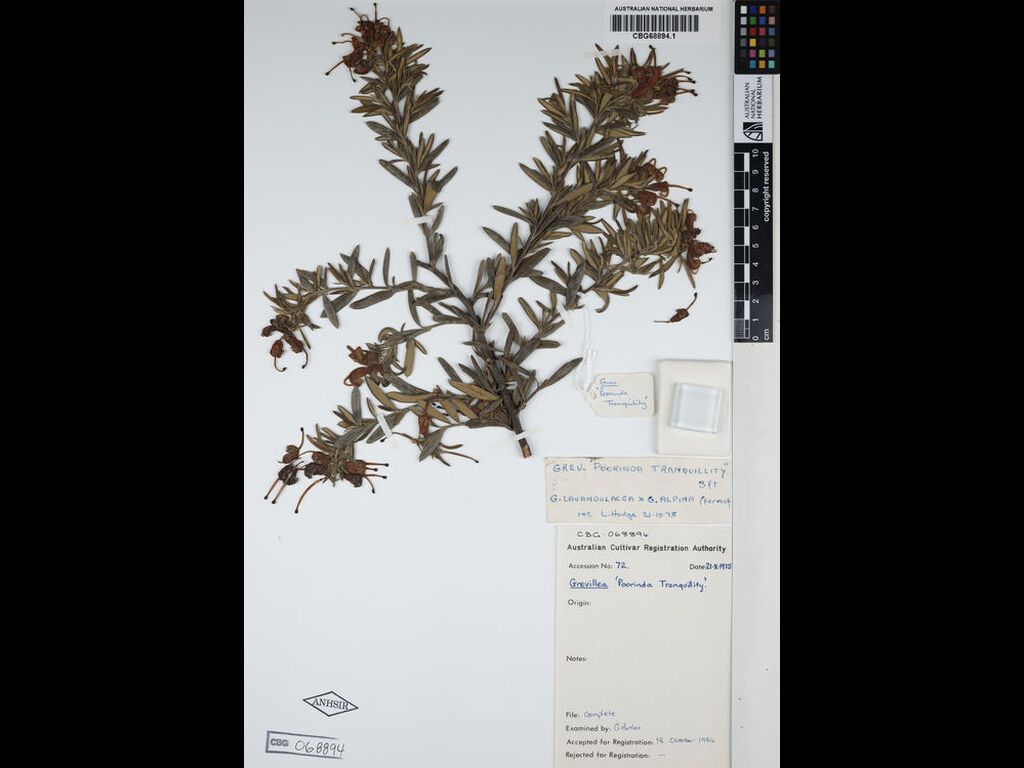Grevillea 'Poorinda Tranquillity'
- File Number
- 72
- ACRA Field Book Number
- -
- Registration Date
- 18/10/1984
- Application Received
- 01/10/1975
- Family
- Proteaceae
- Cultivar Name
- Grevillea 'Poorinda Tranquillity'
- Origin
- Grevillea 'Poorinda Tranquillity' is assumed to be a cross between G. lavandulacea and G. alpina.Cultivar first received by the Authority in October 1975. The applicant is Mr and Mrs L Hodge, "Poorinda", Mt Lookout Road, Bairnsdale, Victoria, 3875.
- Characteristics
- Grevillea 'Poorinda Tranquillity' grows to a height of about 1m and a width of about 1.25m. The leaves are glabrous on the upper surface, with a dense covering of silvery hairs on the lower surface. They are about 3cm long and about 7mm wide with pungent tips and rolled edges. Flowers are borne in dense clusters on short branchlets. Each flower is more or less 1.2cm long. The perianth tube is pink, grading to cream towards the limb. The styles are a deeper shade of pink. Diagnosis: G. 'Poorinda tranquillity' is immediately distinguishable from both of its parents. The leaves are as wide as G. alpina but longer, and are wider and longer than G. lavandulacea but less rolled at the edges. The flowers are in terminal clusters on much longer branchlets than G. lavandulacea. The styles are long and moderately hairy, not short and densely hairy like G. alpina or almost glabrous like G. lavandulacea.
- Cultivation
- Suitable for well drained soils. Best in a sunny site but will tolerate some shade. Frost resistant to -6C. Responds well to pruning.
- Publication
- Tully, P. (1977), The Poorinda Grevilleas. Australian Plants 9(73): 214
- Colour Coding
- RHS Colour Chart 1966.perianth tube: red group 50C.perianth limb: yellow-orange group 19C/D.style: red group 50B.
- Propagation
- Cuttings from semi-firm new growth
- Applicant Name
- Mr L Hodge.
- Uses
- Groundcover suitable for mass planting or mixed in a shrubbery, or as a spectacular feature plant, attracts nectar feeding birds.
- Availability
- Specialist native plant nurseries
- ANBG Accession Numbers
- ACC072, CBG068894
- NSL ID
- -

